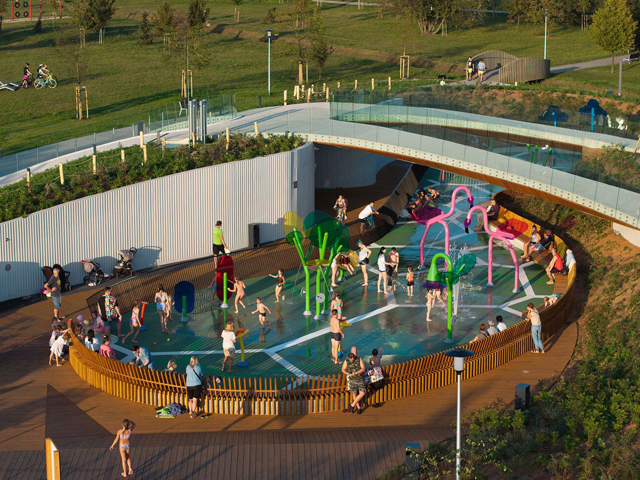THE POWER OF PUBLIC SPACE
14 Nov 2017
The town of Medellin in Colombia stands as a testament to how the power of gentrification and a vested interested in creating child-friendly public spaces transformed a notoriously dangerous city for the better.

Renowned architect and urban planner, Jaime Lerner defines urban acupuncture as a series of small-scale, highly focused interventions that have the capacity to regenerate or to begin a regeneration process in dead or damaged spaces and their surroundings.
Rather than urban acupuncture, the intervention that took place in the rugged geography of Medellin’s Comuna 13 was like open-heart surgery; a large-scale action aimed at bringing about physical and social change of what was once one of the most dangerous neighbourhoods in the world’s most dangerous city.
A bilingual guide takes a group through the neighbourhood, showing them the escalators that gave the intervention worldwide fame. At the same time, in one of the many refurbished squares, a CNN team records interviews with locals and foreigners who visit by the hundreds what was, until recently, an unlikely tourist destination. A drone flies over the scene; it is unknown if it is operated by the omnipresent police, CNN or tourists.
Taking a break along the tour, the guides offer her charges salty mango ice cream from a local store that thanks to the escalators, the plazas, the murals, the new lighting, and the full-time police surveillance, has become a small gold mine. There is no rubbish, not even a piece of a paper or a bottle thrown in the streets.
Beautiful poverty is still poverty, but [in this neighbourhood] with a regained dignity. The area recovers a hidden beauty. It becomes an attractive and safe place, which offers spaces for the enjoyment of its inhabitants, who despite the boom are still generally in the same position as before. There are still no Airbnb’s or boutique cafes. It is an example of "gentrification without expulsion" as Francisco Sabatini would say. 
The intervention in Comuna 13 was like an open heart surgery, but it also included a good dose of acupuncture to activate and keep each part of the project in shape. If the spine of the system is the escalators, the micro-activation of the fabric was done by reaching a common scale in the deterioration state.
For example, the acupuncturist/architect included a slide in the intervention that converted something routine into something extraordinary. With a twin slide, the scale is much more than a space to go up and down; it has been transformed from a place of passage into a place to be because there is no child who does not want to slide down again once his feet land on the floor. Furthermore, as the children start arriving and discovering the playful dimension of this anonymous public space, their parents also begin to arrive, first to take a look, then to make their own social life with a salty mango ice cream in hand. If children find it good, then it is good for everyone: simple and cheap, but a high-impact intervention.
This intervention in Comuna 13 was expensive to build, manage and maintain, which makes it difficult to mass-replicate. That does not take away its extraordinary character in every sense of the word. The message is clear: acting in low-income sectors cannot be synonymous with low-standard solutions, cheap materials, mediocre architecture, slow projects and quick forgetting. So far, employing experience and high investment have been worth the effort.







